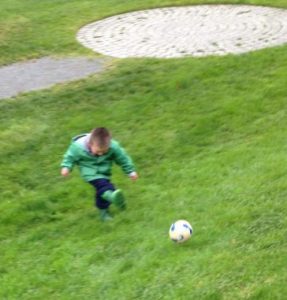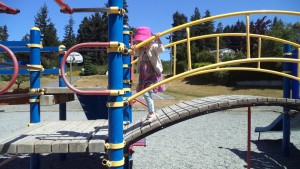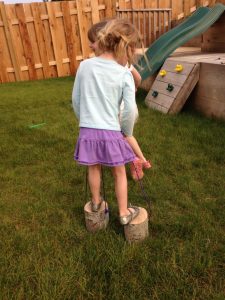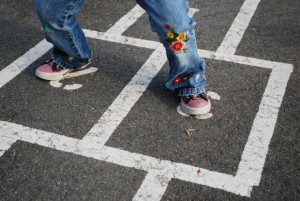March seems appropriate for a post on kids’ goal-setting skills because marching is steady and purposeful. Developing these skills is child’s play.
Babies, toddlers, and young kids are strongly motivated—for some things that is. A baby will struggle to find a way out of a crib, and a toddler or older child will stack blocks, toys and rearrange furniture to reach the cookies.
Kids will set their own goals as they play. Little Sister wanted to cross the bridge at the playground all by herself. She held on the edges and slowly took one sideways step at a time. She asked me to stay back and only watch. Big Sister wanted to go down the waterslide at the pool and she’s finally tall enough. I had to stay down with her sister so she went up by herself.
Some goals children choose are realistic, like putting together a simple puzzle, but others are not, like building a block tower so high it reaches the sky. As kids play, they will figure out which ones that can do and which they can’t. As a strategy, goal setting is tremendously powerful, and we can support children’s learning by ensuring they have time and opportunity to play.
Basically, goal-setting is a three-step process: deciding on the goal, figuring out how to accomplish it, and taking action. When we notice, children wanting to do something, we can ask them how they might be able to. This moves them to the second step. We can also break a big task into smaller ones for them. For instance, the goal might be to get all the toys put away before going to the park. We can suggest they put away all the blue toys, and we’ll help with the red ones. Celebrating their success with them when they accomplish a goal also encourages them.
As children play today, how can you support kids’ goal-setting skills?


